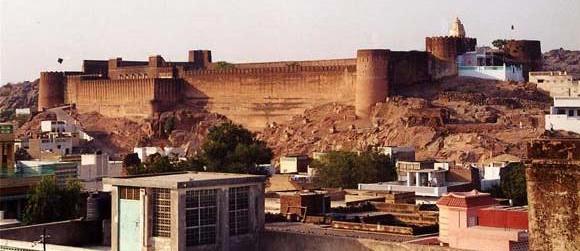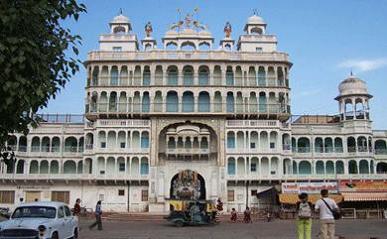|
|
|
Shekhawati Attractions |
|
Tourist Attractions in Shekhawati
The major attraction of the Shekhawati region are the
magnificent havelis. These havelis were built by the
Marwaris, the rich merchants of the region, and display
a unique architectural style. These havelis were built
to ensure safety and privacy of the women and protection
from the heat of the long and harsh summers. The havelis
were painted in the Shekhawati's fresco style,
predominantly in the blue, maroon, yellow, green and
indigo color and have beautiful wall |
 |
|
|
paintings.
The style of fresco painting is locally known as ala gila. The
colours, mixed into a paste, were applied on to the damp wall
with a plaster of lime paste through beating, burnishing and
polishing. The painters and masons who were commissioned for
the task undertook large panels together and work in teams so
that joints in plaster, did not show. Binding agents such as
tempera, gum and camel fat were also used. The pigments were
obtained from iron rich sediments (green, yellow, ochre),
lampblack (black), indigo (blue), stone powder (red), saffron
(orange) and chalk (white). The process of creating the
frescos was tedious. Two layers of clay plaster were provided
on the wall and later the third layer of mortar is provided
into which the finely cut pieces of hessian were added,
followed by a coat of plaster using lime, gravel or brick
dust. The final coat consisted of sieved lime dust made into a
paste using sour buttermilk and jaggery. This was the main
surface on which the painters had to draw and fill in colours
while the uppermost layers is still wet. It was then polished
with smooth agate, and dry coconut was rubbed in to seal in
the paintings to ensure that the paintings lasted over
centuries, and can be only damaged by nature. But as most of
these paintings are out in the open, they were more damaged by
the men.
The subjects of the Shekhawati frescos
(1830 AD - 1900 AD) were based on the variety of themes, but
changed over the period of time.
Floral:
The early works were very simple, used very few colours, and
consisted of floral motifs. Later, floral work was mostly
reserved for the pillars and arches. The floral motifs were
commonly used to create frames and unite a complete section,
within which were canvases of paintings. In the few Muslim
havelis, only floral representations of foliage can be found.
|
| |
|
Religious:
Around the main entrance and interior spaces in the
havelis consisted of the mythical and religious images.
The main subject was the Indian religious legends and
fables, so that entire canvases could be covered with
the marriage processions of gods, or their great wars
with the demons, or from the Ramayana. The legends of
Krishna, and particularly Ras Leelas, can be seen in the
circular ceilings below |
 |
|
|
domes.
Historic:
Historical tales of rulers and scenes of great battles,
and portraits of well known rulers were mainly painted in the
chhatris of the wells, or in the castles of the Rajput feudal
chiefs who controlled small feudatory states in this region.
Secular:
Most of the external walls were painted with the aspects of
daily life that were clearly inspirational and reflect their
lifestyles. These consisted of scenes of processions, of
caparisoned elephants, of celebrated lovers such as Dhola and
Maru, and trompe I’oeil paintings that created a suspension of
belief in disbelief. Some of the delightful representations
are the women peeping out of windows, a camel straddling a
small window, or a staircase turning into an elephant with the
balustrade in its trunk.
The turn of the 19th century saw the
appearance of new motifs, due to the British Raj’s influence
upon the Indian culture. Trains, cars, balloons, telephones,
gramophones, portraits of English men in hunting attires and
their memsahibs, some walking their dog, and others engaged in
needlework and portraits of the haveli owners were painted all
over the walls. By 1930, the Shekhawati frescoes were
degenerated and this resulted in the migration of the Marwari
families. The murals and several examples of beautiful art
were further devastated. |
| |
| |
|
 |
|